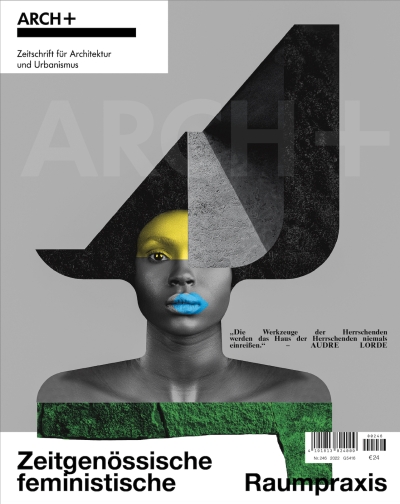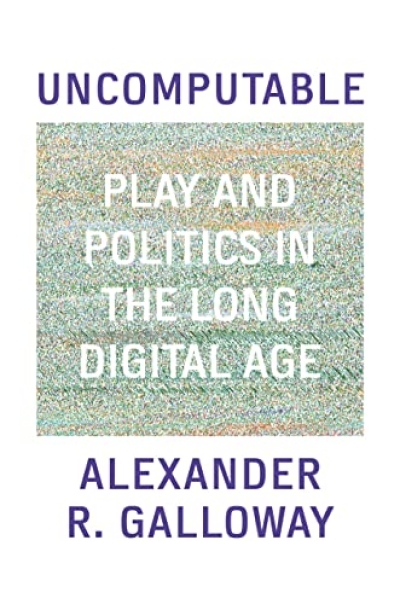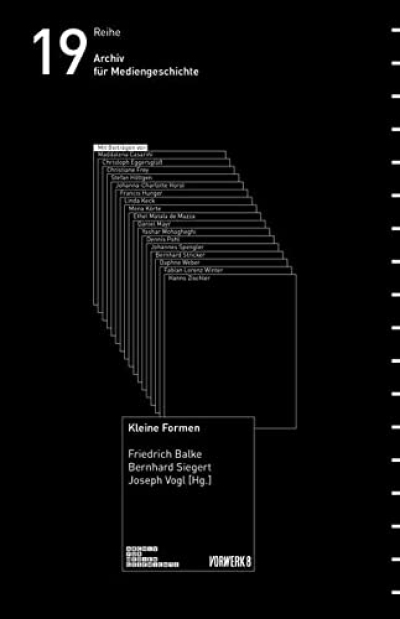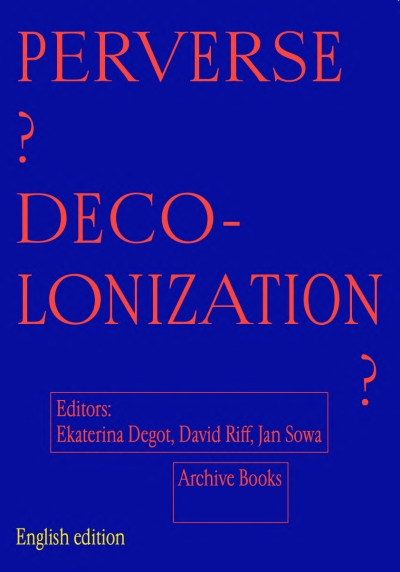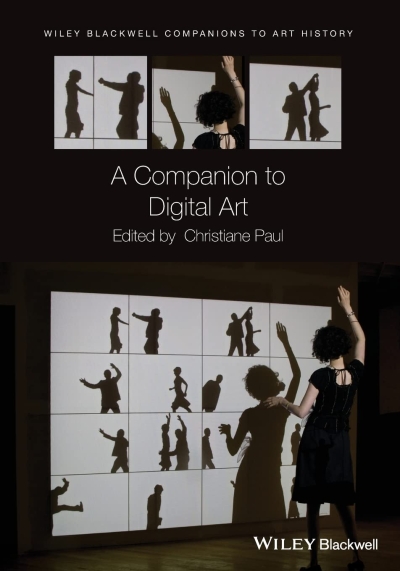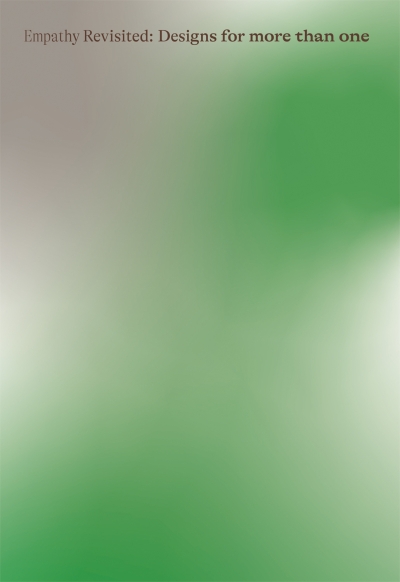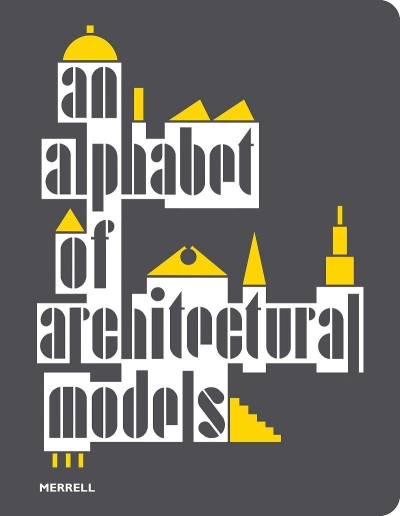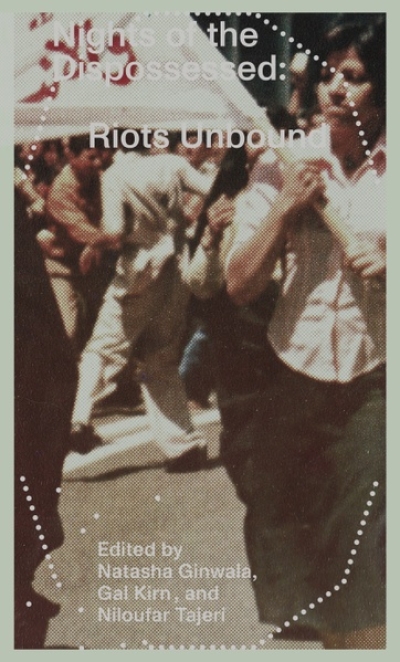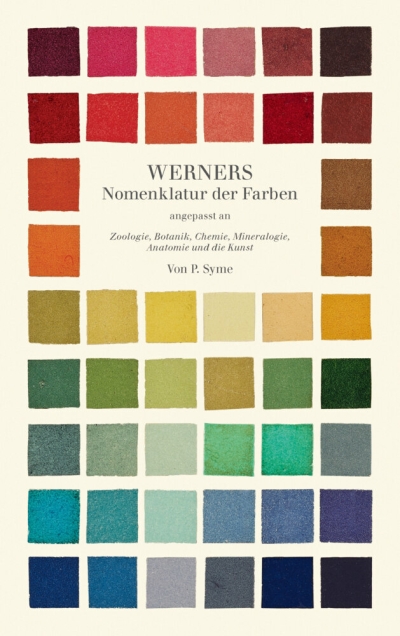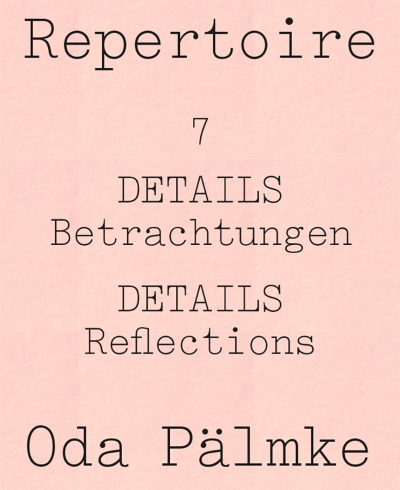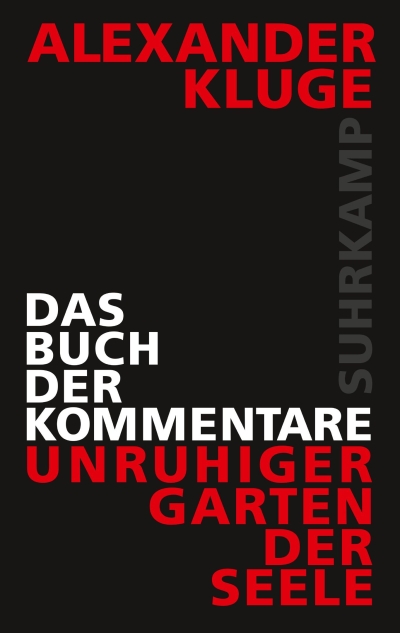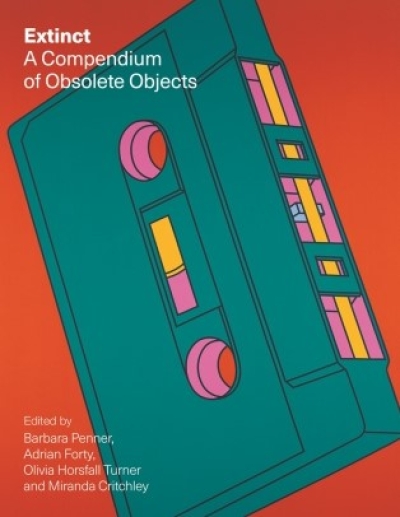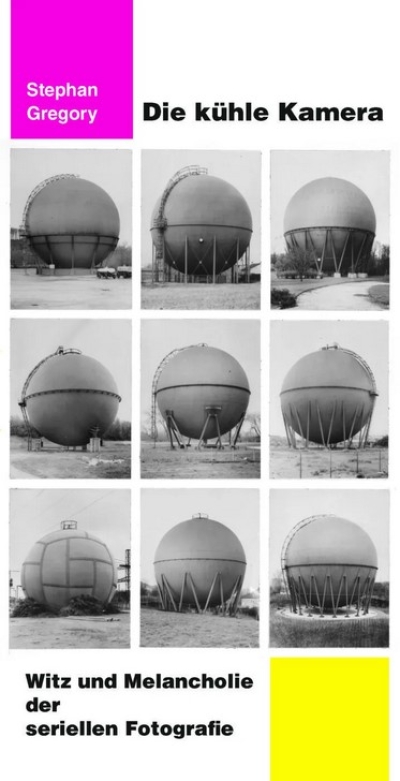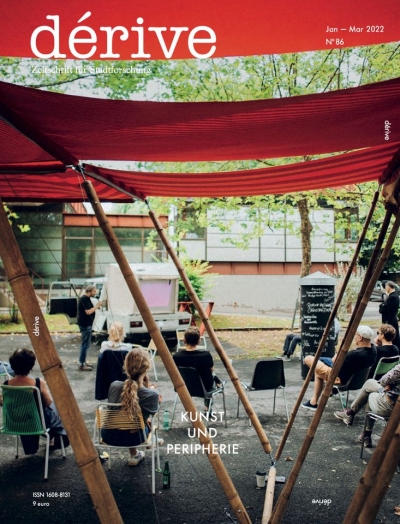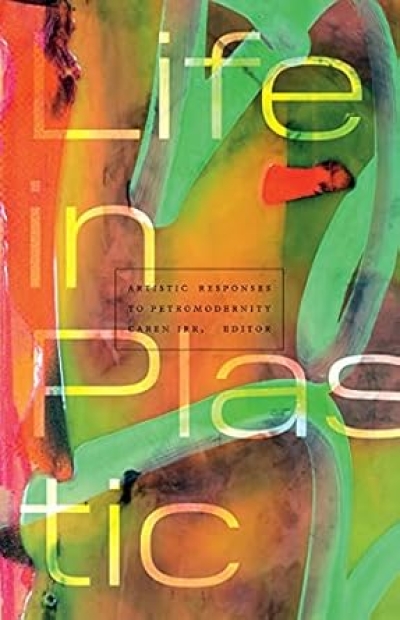Arch+ Zeitschrift für Architektur und…
Arch+ 246. Zeitgenössische feministische Raumpraxis
gerade nicht auf Lager
Alexander Galloway
Uncomputable. Play and Politics in the Long Digital Age
gerade nicht auf Lager
Friedrich Balke, Bernhard Siegert,…
Kleine Formen – Archiv für Mediengeschichte, Bd. 19
gerade nicht auf Lager
Ekaterina Degot, David Riff, Jan Sowa (…
Perverse decolonisation? (English Ed.)
Hanka van der Voet, Johannes Reponen (…
Warehouse Review 002, A Review of Reviews
Elizabeth Wilson
Eingeweide, Pillen, Feminismus
Christiane Paul (Hg)
A Companion to Digital Art (Blackwell Companions to Art…
gerade nicht auf Lager
Mariana Pestana, Sumitra Upham, Billie…
Empathy Revisited. Designs for more than one
gerade nicht auf Lager
McKenzie Wark
Philosophy for Spiders. On the Low Theory of Kathy Acker
gerade nicht auf Lager
Olivia Horsfall Turner, Simona…
An Alphabet of Architectural Models
gerade nicht auf Lager
David Graeber, David Wengrow
Anfänge. Eine neue Geschichte der Menschheit
gerade nicht auf Lager
Natasha Ginwala, Gal Kirn, Niloufar…
Nights of the Dispossessed: Riots Unbound
Patrick Syme, Abraham Gottlob Werner
Werners Nomenklatur der Farben. Angepasst an Zoologie,…
gerade nicht auf Lager
Carla Lonzi, Allison Grimaldi Donahue
Carla Lonzi. Self-Portrait
Oda Pälmke
Repertoire 7, Oda Pälmke
Kolja Möller (Hg)
Populismus. Ein Reader
Alexander Kluge
Das Buch der Kommentare. Unruhiger Garten der Seele
Alexander Kluge
Zirkus / Kommentar
gerade nicht auf Lager
Natalie Donat-Cattin
Collective Processes. Counterpractices in European…
Marie Rotkopf, Marcus Steinweg
Fetzen. Für eine Philosophie der Entschleierung
Alan Licht
Common Tones. Selected Interviews with Artists and…
gerade nicht auf Lager
Barbara Penner, Adrian Forty, Olivia…
Extinct. A Compendium of Obsolete Objects
gerade nicht auf Lager
Stephan Geene
Freiheit 71. Ricky Shayne, Musik und die Materialität des…
Stephan Gregory
Die kühle Kamera. Witz und Melancholie der seriellen…
gerade nicht auf Lager
Philipp Ekardt
Benjamin on Fashion
dérive
dérive N° 86, Kunst und Peripherie (Jan-Mar 2022)
gerade nicht auf Lager
Laurie Cluitmans (Ed.)
On The Necessity Of Gardening. An Abc Of Art, Botany And…
Aljosa Dekleva (Ed.)
AA nanotourism Visiting School: Vienna, Austria 2020
Helen Westgeest & Kitty Zijlmans (…
Mix & Stir. New Outlooks on Contemporary Art from…
gerade nicht auf Lager
Martin Barner
Tools for Men-with-Feminist-Ambitions
Astrid Deuber-Mankowsky, Philipp Hanke…
Queeres Kino / Queere Ästhetiken als Dokumentationen des…
gerade nicht auf Lager
Moisés Puente (Ed.)
2G 83. Smiljan Radic
gerade nicht auf Lager
Florian Malzacher, Jonas Staal (Eds.)
Training for the Future. Handbook
gerade nicht auf Lager
Andrej Holm
Objekt der Rendite. Zur Wohnungsfrage und was Engels noch…
gerade nicht auf Lager
Vanessa Grossman, Ciro Miguel (Hg)
Everyday Matters. Contemporary Approaches to Architecture
Karin Berkemann (Hg.)
Das Ende der Moderne? Unterwegs zu einer…
IDEA Magazine
IDEA 396. Explore Color Design. Digital Color and the…
Lisa Beißwanger
Performance on Display. Zur Geschichte lebendiger Kunst im…
gerade nicht auf Lager
Janne Gärtner, Anne Waak
Aus einem Land vor unserer Zeit. Die Kinder von Kleinwelka
Sven Quadflieg
Mit erhobener Faust. Die Ästhetik des Protests und die…
gerade nicht auf Lager
Rosi Braidotti
Posthuman Feminism
gerade nicht auf Lager
-archaicstudio, Anja Dotter
image [im-ij] \ ˈim-ij \
gerade nicht auf Lager
Jens Müller
A5/10: Collecting Graphic Design – Die Archivierung des…
Judith Butler
Sinn und Sinnlichkeit des Subjekts
gerade nicht auf Lager
Andrew Herscher, Daniel Bertrand Monk
The Global Shelter Imaginary: IKEA Humanitarianism and…
gerade nicht auf Lager
Matthew Hockenberry, Nicole…
Assembly Codes. The Logistics of Media
gerade nicht auf Lager
Elizabeth A. Povinelli
Between Gaia and Ground: Four Axioms of Existence and the…
Rosa Barba
On the Anarchic Organization of Cinematic Spaces
gerade nicht auf Lager
Marcus Quent
Gegenwartskunst. Konstruktionen der Zeit
gerade nicht auf Lager
Napoleone Ferrari, Michelangelo Sabatino
Carlo Mollino. Architect and Storyteller
Stefan Jung / Marcus Stiglegger (Hrsg.)
Berlin Visionen. Filmische Stadtbilder seit 1980
Saâdane Afif
Morceaux choisis – A Monograph
Birgit Schlieps, Hanne Loreck (Hg)
Aktau. Bildphänomene einer Plattenbaustadt in der…
gerade nicht auf Lager
Anne König (Ed.)
Jonas Mekas. I Seem to Live. The New York Diaries. Vol 2.…
gerade nicht auf Lager
John Robinson
Famous for Fifteen People. The Songs of Momus 1982-1995
Linda Peake, Elsa Koleth, Gokboru Sarp…
A Feminist Urban Theory for Our Time. Rethinking Social…
Caren Irr (Hg)
Life in Plastic. Artistic Responses to Petromodernity
gerade nicht auf Lager
Stephan Lanz
Das Regieren der Favela. Gewaltherrschaft, Populärkultur…
Tom Avermaete, Janina Gosseye
Urban Design in the 20th Century. A History
gerade nicht auf Lager
Moisés Puente (Ed.)
Lacaton & Vassal. Free space, transformation, habiter
Anselm Franke, Heinz Emigholz, HKW (Eds…
Counter Gravity - Die Filme von Heinz Emigholz
gerade nicht auf Lager
Maryam Jafri, Nina Tabassomi
Maryam Jafri. Independence Days
Adam Pendleton, Alec Mapes-Frances (Eds…
Adam Pendleton. Pasts, Futures, and Aftermaths: Revisiting…
Georg W. Bertram, Stefan Deines, Daniel…
Die Kunst und die Künste. Ein Kompendium zur Kunsttheorie…
Wolfgang Fuhrmann, Claus-Steffen…
Perspektiven der Musikphilosophie
Judith Butler
Marx ökologisch. Pariser Marxlektüren
Beate Bartel, Gudrun Gut, Bettina…
M_Dokumente. Mania D., Malaria!, Matador
gerade nicht auf Lager
Matthias Brunner, Maren Harnack,…
Transformative Partizipation. Strategien für den…
gerade nicht auf Lager
Franco “Bifo” Berardi
The Third Unconscious The Psychosphere in the Viral Age
gerade nicht auf Lager
Sara Ahmed
Complaint!
Susan Stewart
The Ruins Lesson. Meaning and Material in Western Culture
Arch+ Zeitschrift für Architektur und…
Arch+ 245. Fassadenmanifest
gerade nicht auf Lager
Shannon Mattern
A City Is Not a Computer Other Urban Intelligences
gerade nicht auf Lager
Leslie Kern
Feminist City. Claiming Space in a Man-Made World
gerade nicht auf Lager
Louise Schouwenberg & Michael…
The Auto-Ethnographic Turn in Design
gerade nicht auf Lager
Yuk Hui
Art and Cosmotechnics
gerade nicht auf Lager
B. Cannon Ivers (ed.)
250 Things a Landscape Architect Should Know
Esther Anatolitis
Place, Practice, Politics
gerade nicht auf Lager
Alexander Steffen
Vanishing Berlin
gerade nicht auf Lager
Philipp Meuser
Architektur in Afrika. Bautypen und Stadtformen südlich der…
Alex Head
Ricochet. Cultural Epigenetics and the Philosophy of Change
Ulrich Gutmair
The First Days of Berlin. The Sound of Change
gerade nicht auf Lager
Edward Tufte
The Visual Display of Quantitative Information
gerade nicht auf Lager
Edward R. Tufte
Beautiful Evidence
gerade nicht auf Lager
Edward R. Tufte
Visual Explanations. Images and Quantities, Evidence and…
McKenzie Wark
Das Kapital ist tot
Bruno Latour
After Lockdown. A Metamorphosis
hg. von Giovanna Zapperi
Carla Lonzi. Selbstbewusstwerdung. Texte zu Kunst und…
Helmut Draxler
Die Wahrheit der Niederländischen Malerei. Eine Archäologie…
Walter Scheiffele, Steffen Schuhmann (…
Karl Clauss Dietel. Die offene Form
Tinatin Gurgenidze (Ed.)
Eastern Block Stories. Visualising Housing Estates from…
Édouard Glissant
Philosophie der Weltbeziehung. Poesie der Weite
gerade nicht auf Lager
Kirsty Bell
Gezeiten der Stadt. Eine Geschichte Berlins
gerade nicht auf Lager
Doris Kleilein, Friederike Meyer (Hrsg.)
Die Stadt nach Corona
gerade nicht auf Lager
Claude Lichtenstein
Die Schwerkraft von Ideen. Eine Designgeschichte. Band 2
gerade nicht auf Lager
Claude Lichtenstein
Die Schwerkraft von Ideen. Eine Designgeschichte. Band 1
gerade nicht auf Lager
Jesko Fezer & Studio…
(How) do we (want to) work (together) (as (socially engaged…
Melissa Canbaz, Künstlerhaus Bremen (Ed…
Aleana Egan. small field

